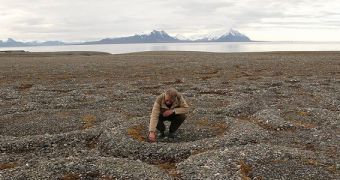According to the conclusions of a new study by researchers at the Florida State University (FSU), it would appear that thawing permafrost is releasing massive amounts of greenhouse gases in the atmosphere, significantly more than initially calculated. The research shows that most of these GHG are released via plants, the team notes.
In a paper published in the latest issue of the esteemed scientific journal Proceedings of the National Academy of Sciences (PNAS), the team explains that these accelerated GHG emissions contribute to a more pronounced global warming trend worldwide as well as to faster climate change. Permafrosts are believed to hold roughly 1,400 gigatons (billion tons) of carbon.
This amount is much higher than the 850 gigatons of carbon that are already in the atmosphere today, experts say. Therefore, permafrost – permanently-frozen soils located predominately in polar regions – has the potential to significantly alter the chemical composition of our atmosphere, if released. The problem is that global warming is already thawing permafrost and that thawing permafrost accelerates global warming.
This vicious circle can adversely affect our planet if measures are not taken to prevent this. “We've known for a while now that permafrost is thawing. But what we've found is that the associated changes in plant community composition in the polar regions could lead to way more carbon being released into the atmosphere as methane,” says researcher Suzanne Hodgkins.
Even more worrying is that these frozen soils contain vast amounts of methane, a carbon compound that is around 33 times more potent as a GHG than CO2 is. If all of these gases are released, then the total amount of carbon in the atmosphere would be five times that present today, explains Hodgkins, who is a PhD student in chemical oceanography at FSU and the lead author of the new PNAS paper.
“The world is getting warmer, and the additional release of gas would only add to our problems,” adds the John Widmer Winchester professor of oceanography at FSU, Jeff Chanton, The expert and his PhD student carried out this research with money from a US Department of Energy (DOE) three-year grant, e! Science News reports.
The research group also includes scientists from Europe and Australia. For this paper, entitled “Changes in peat chemistry associated with permafrost thaw increase greenhouse gas production,” representative soils samples were primarily collected from Sweden. During upcoming researches, samples will be gathered from Canada, Alaska, and locations in the Southern Hemisphere as well.

 14 DAY TRIAL //
14 DAY TRIAL //